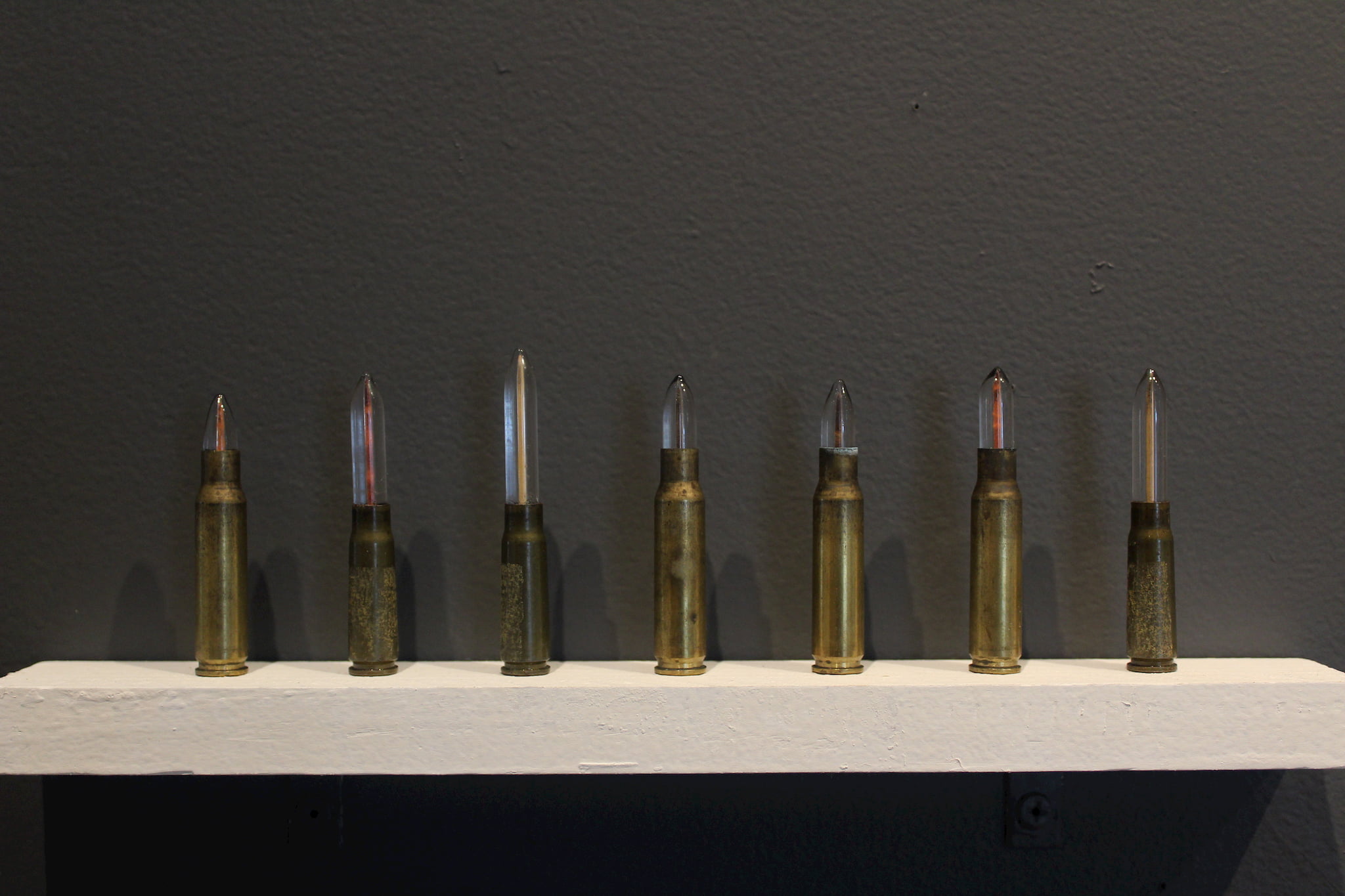loading...
Bernice Akamine, Papahanaumoku, 2018

Spent bullet casings, glass and ʻalaea, Hawaiian earth pigments.
Niihau: 1.1cm x 6.8cm x 1.1cm
Photo courtesy of the artist.
Artist Statement:
The artwork targets the continuous desecration of Hawaiian sacred, burial and historical sites. The artwork also addresses environmental pollution in the form of depleted uranium and other chemicals released from spent bullets and bombs that make its way to the ocean and seeps down into the aquifer, the main source of drinking water. And, ocean pollution in the form of noise affecting sea life with the Navy’s use of sonar, and other forms of pollution that affect life in the ocean from the use of electromagnetic weapons, high powered lasers, surface and underwater vehicles that are being tested in the waters off of Kaua’i Island.
The impetus for creating the piece was an Emergency alert the State of Hawai’i sent via text message to cellular phones in Hawaii.
January 13, 2018, 8:10 AM,
Emergency alerts:
BALLISTIC
MISSILE THREAT
INBOUND TO
HAWAII. SEEK
IMMEDIATE
SHELTER. THIS IS
NOT A DRILL
and later,
January 13, 2018, 8:48 AM,
Emergency alerts:
There is no missile
threat or danger
to the State of Hawaii. Repeat.
False Alarm.
The Ballistic Missile Threat is a stern reminder that as long as the US has military sites scattered across the Hawaiian Islands, Hawaii could once again be the target of any foreign military aggression in the Asia/Pacific area that is aimed at the United States.
For this series I chose to use materials that give both a sense of strength and fragility. The used bullet casing which shows little wear and could be reloaded for re-firing creates a sense of tension, pent up energy waiting to explode; and the top of the bullet made of glass which would shatter upon impact . Gathering native Hawaiian plant seeds that thrive in close proximity to the live-fire training sites of: Pōhakuloa Training Center, Hawaii Island; Barking Sands Missile Range, Kauaʻi Island; Schofield Barracks and Mākua Military Reservation, Oahu Island; then filling
the bullets with viable seeds of plants that would thrive at these sites gives one a sense of hope for the possibility of other outcomes for these sites. While covertly picking up bullet casings or purchasing spent bullet casings at the rifle range, rather than using new bullet casings gives the piece a history of already being fired and having released some of its energy.
While the artwork speaks of the desecration of sacred, burial and historic Hawaiian sites and of Native Hawaiian rights, on a larger scale it is a look at the pollution of land and sea across the US. There are polluted Brown Fields created by live-fire and bombing training sites across the US. When the US live-fire training is done these Brown Fields may never be fully cleared of unexploded ordinance or the chemicals that have leached into the ground below making the land uninhabitable for generations to come.
Sources: thegardenisland.com, Navy outlines plans for future activity, download September 22, 2020.